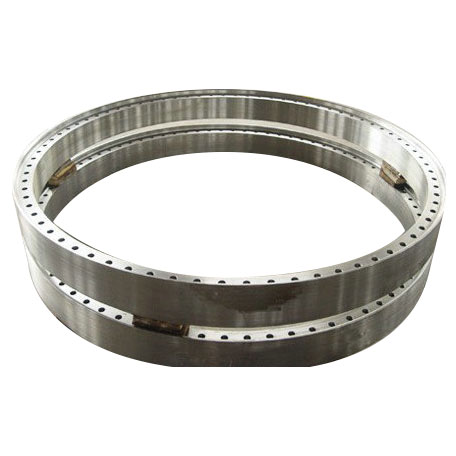Advancing Wind Power: Innovations in Large Diameter Wind Power Flange Design and Technology
2024-03-21
In the ever-evolving landscape of renewable energy, wind power continues to emerge as a leading solution for clean and sustainable electricity generation. At the core of wind turbine systems lies a critical component: the large diameter wind power flange. These flanges play a pivotal role in ensuring the structural integrity and reliability of wind turbine towers. As the demand for wind energy grows and technology evolves, advancements and innovations in the design and technology of large diameter wind power flanges are driving improvements in performance, efficiency, and sustainability. Let's explore some of the latest advancements shaping the future of wind power.
1. Advanced Materials and Composites:
One of the key areas of innovation in large diameter wind power flange design is the use of advanced materials and composites. Engineers are exploring high-strength alloys, composite materials, and advanced coatings to enhance the strength-to-weight ratio, corrosion resistance, and fatigue performance of flanges. These materials offer superior durability, longevity, and reliability, enabling wind turbine systems to operate more efficiently and sustainably over their lifespan.
2. Optimized Structural Design:
Innovations in structural design techniques are enabling engineers to optimize the geometry, configuration, and load distribution of large diameter wind power flanges. Advanced computational modeling, finite element analysis (FEA), and simulation tools allow for the precise prediction and optimization of flange performance under various loading conditions. By optimizing structural design, engineers can reduce material usage, minimize weight, and improve overall efficiency without compromising safety or reliability.
3. Integrated Monitoring and Sensing Systems:
Another area of innovation in large diameter wind power flange technology is the integration of monitoring and sensing systems for real-time performance tracking and condition monitoring. Smart sensors embedded within flange structures provide valuable data on load distribution, stress levels, temperature variations, and structural health. This enables proactive maintenance, early detection of potential issues, and optimization of operational parameters, ultimately enhancing reliability and reducing downtime.
4. Modular and Prefabricated Solutions:
Modular and prefabricated solutions are revolutionizing the design and manufacturing of large diameter wind power flanges, offering scalability, flexibility, and ease of installation. Prefabricated flange modules can be manufactured off-site using automated processes and assembled on-site, reducing construction time and costs. Modular designs allow for customization and adaptation to specific site conditions, enabling rapid deployment and scalability of wind turbine systems.
5. Additive Manufacturing (3D Printing):
Additive manufacturing, also known as 3D printing, is emerging as a disruptive technology in the production of large diameter wind power flanges. 3D printing enables the rapid prototyping and fabrication of complex geometries, customized designs, and lightweight structures with minimal material waste. By leveraging additive manufacturing, engineers can explore innovative designs, optimize material usage, and accelerate the development cycle of flange components, leading to improved performance and cost-efficiency.
6. Environmental Sustainability Initiatives:
Sustainability is a driving force behind innovation in large diameter wind power flange design and technology. Manufacturers are adopting environmentally friendly practices, such as eco-friendly materials, energy-efficient manufacturing processes, and recyclable packaging. Additionally, initiatives to reduce carbon footprint, minimize waste, and enhance end-of-life recycling are shaping the future of sustainable wind energy infrastructure.
In conclusion, advancements and innovations in the design and technology of large diameter wind power flanges are propelling the wind energy industry towards greater efficiency, reliability, and sustainability. From advanced materials and structural design optimizations to integrated monitoring systems and additive manufacturing, these innovations are driving improvements in performance, cost-effectiveness, and environmental impact. By embracing innovation and collaboration, stakeholders in the wind energy sector are shaping a brighter and more sustainable future powered by clean and renewable wind energy.



